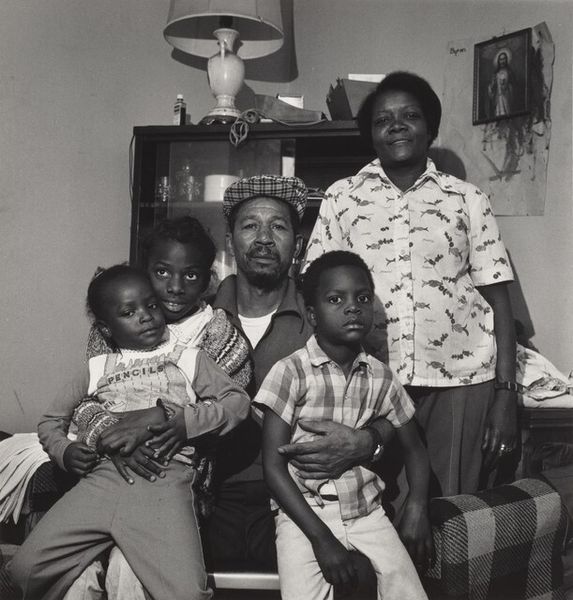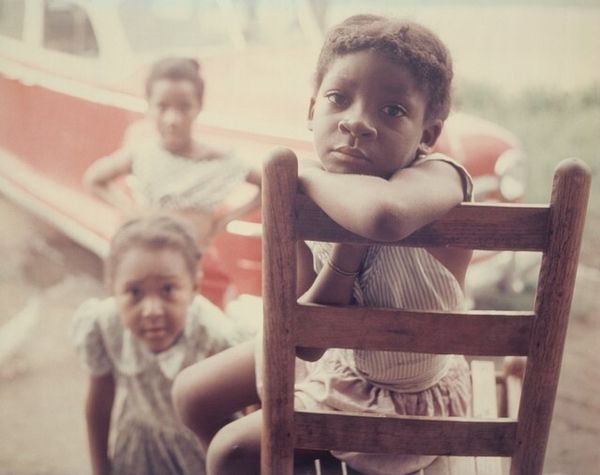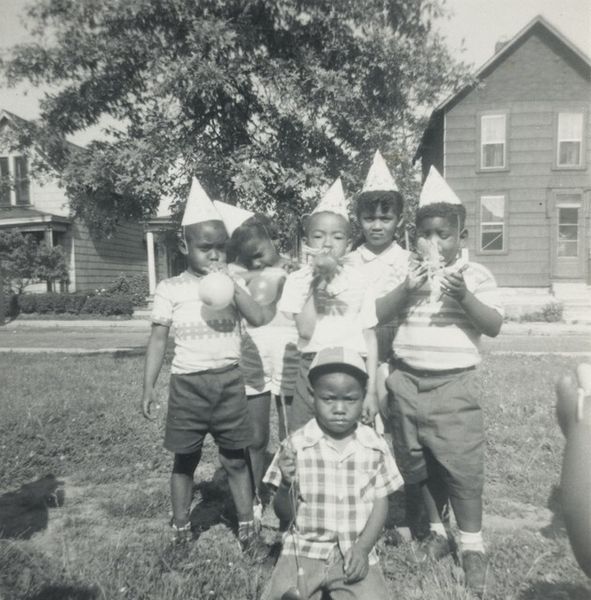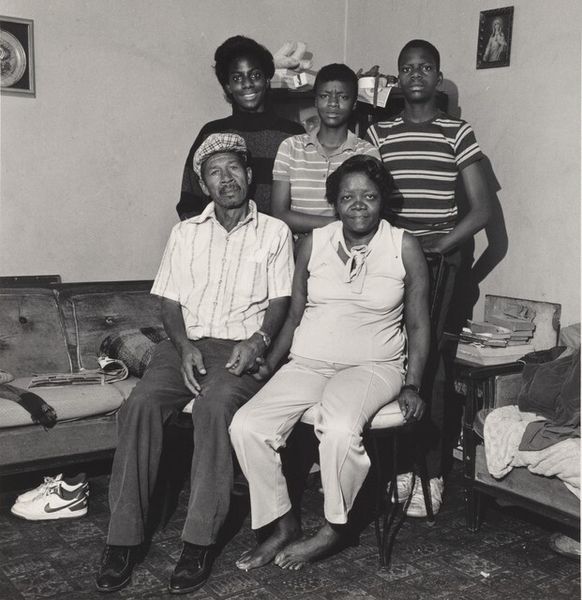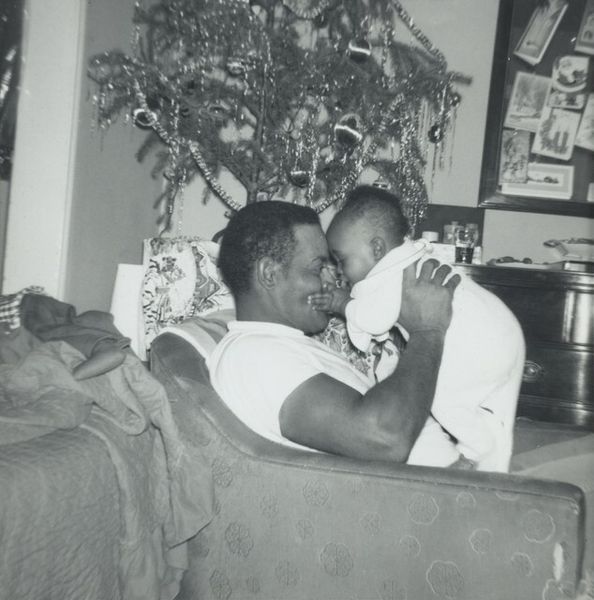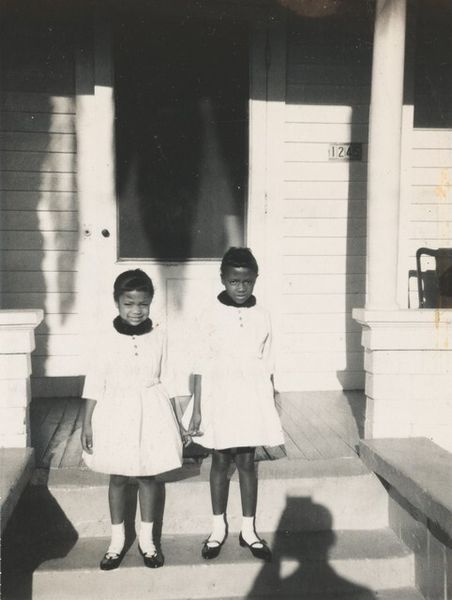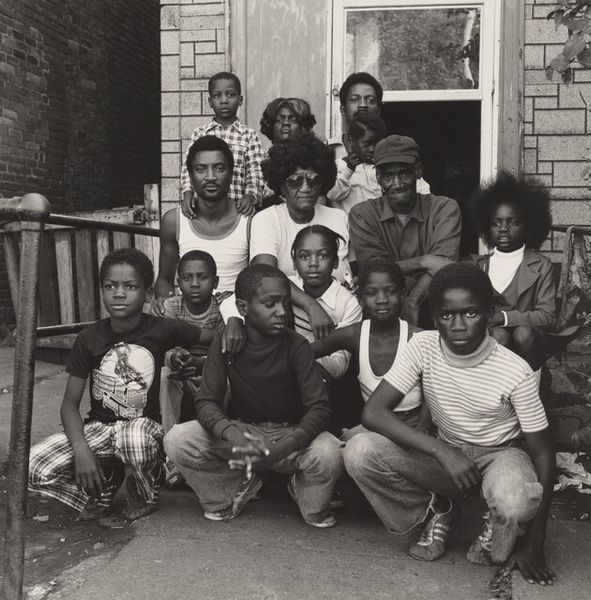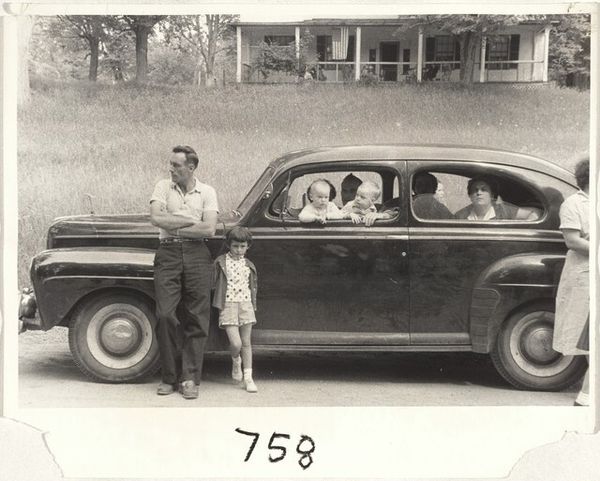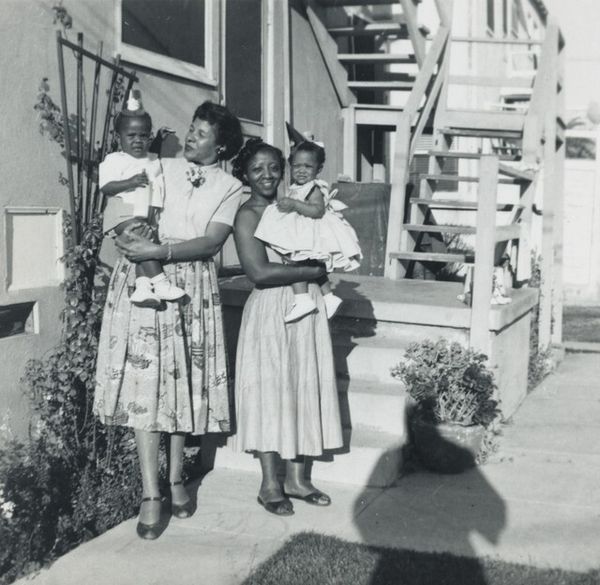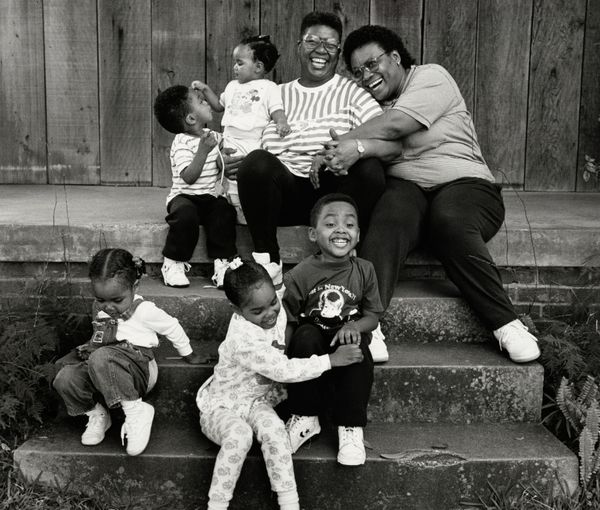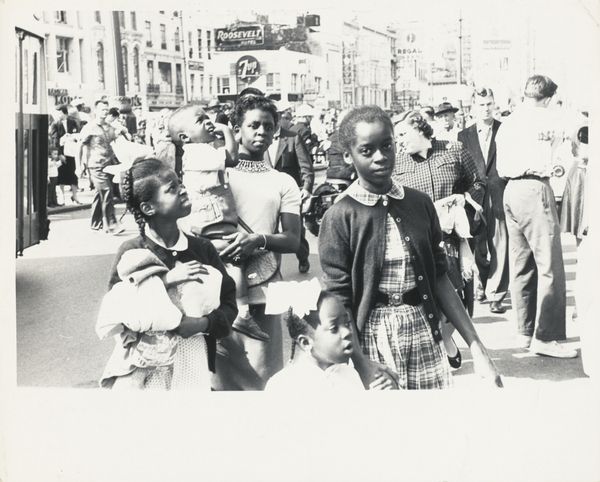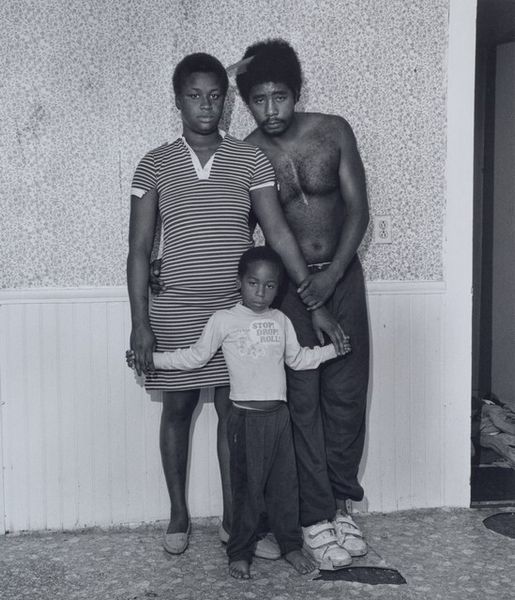
photography, gelatin-silver-print
#
portrait
#
african-art
#
photography
#
historical photography
#
group-portraits
#
gelatin-silver-print
#
monochrome photography
#
history-painting
#
realism
#
monochrome
Dimensions: image: 7.7 × 7.8 cm (3 1/16 × 3 1/16 in.) sheet: 8.9 × 9 cm (3 1/2 × 3 9/16 in.)
Copyright: National Gallery of Art: CC0 1.0
Curator: Let's delve into this captivating gelatin-silver print, “Untitled (Family in front of car),” dating circa 1950s-1960s. Editor: Immediately, I'm struck by the tangible textures – the children’s dresses, the car's heavy metal. It exudes a certain weightiness despite the everyday scene. Curator: It's fascinating to consider this image within the socio-political context of that era, especially regarding the representation of African-American families. How does it disrupt or conform to the visual narratives that were prevalent? The family in the image clearly owns a car, showcasing their socioeconomic position within their community and their connection with consumer society and industry. Editor: Absolutely. The car functions as more than just a material object; it’s symbolic of aspiration and freedom of mobility, deeply impacted by the automobile industry. I wonder, what were the economic realities shaping this family’s access to that car? Curator: Considering gender dynamics, the mother figure is absent. How might we interpret this exclusion in relation to the societal expectations placed upon women at that time? The father is holding one child while also having his other kids standing nearby. We must ask, where is the mother? Editor: And consider the photographic process itself. The gelatin-silver print, a product of industrial chemistry and labor, creates this moment, capturing the fleeting present but turning it into a physical, enduring artifact. How does the means of producing this artwork contribute to its meaning? The gelatin-silver print itself as a material thing gives this work a different dimension from today’s photographs that are solely digital. Curator: That’s a key point. This image, I think, challenges the established aesthetics of mainstream portraiture by highlighting a slice of authentic, everyday life. How does this reflect shifting perceptions and perhaps, agency, within the African-American community? What is their understanding and relationship with image-making and photography during this era? Editor: Looking closely, the slightly worn details of the car speak to the realities of ownership and upkeep. It's not just about acquiring something; it’s about the ongoing labor to maintain it, showing consumption but also revealing wear-and-tear of use and life. Curator: Indeed, it adds another layer. Ultimately, the photograph reveals a rich tapestry of social, economic, and personal dynamics interwoven in this seemingly simple family portrait. Editor: Yes, examining its materiality illuminates not only the process of creation but also the socio-economic forces that shaped the subjects' lives.
Comments
No comments
Be the first to comment and join the conversation on the ultimate creative platform.
